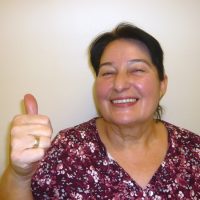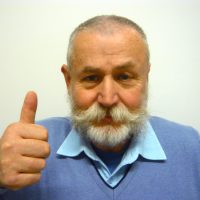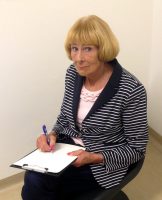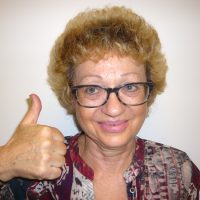Stem Cells from Fat: Cells with Potential
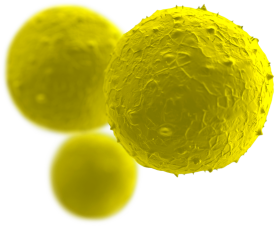
We now know that fat tissue is the body’s most important reserve of vital cells, including stem cells and so-called progenitor cells. Since its foundation in 1994 body fat and its potential are in the focus in Clinic DDr. Heinrich®. The regenerative effects documented in many studies suggest therapeutic applications in orthopaedics and other areas of medicine.
These findings are not new: Over the course of many years, practitioners of veterinary medicine have made positive experiences in the therapeutic use of autologous stem cells for thousands of dogs and racehorses. Stem cells extracted from the animals’ autologous fat appear to be suited for the regeneration of damaged joints, bones and cartilages. Furthermore, they are administered with the goal of general regeneration and increasing performance.
Centers worldwide are now also carrying out therapy with adult stem cells from autologous fat on humans. Due to the enormous potential for success and possible huge benefits, Clinic DDr. Heinrich® is now offering regenerative stem cell therapy.
Therapeutic Application of Stem Cells
Diseases & Conditions
- Alopecia (hair loss)
- Alzheimer
- Amyotrophic lateral sclerosis (ALS)
- Arteriosclerosis (heart)
- Asthma
- Crohn’s disease
- Diabetes
- Empty Nose Syndrome (ENS)
- Erectile Dysfunction (ED)
- Fibromyalgia
- Induratio penis plastica (IPP)
- Migraine
- Multiple Sclerosis (MS)
- Muscular dystrophy
- Osteoarthritis, joint problems and sports injuries (knee, hip, shoulder, elbow, hand, finger, etc.)
- Parkinson
- Peripheral neuropathy
- Raynaud’s phenomenon
- Skin aging
- Stroke (prevention and post-treatment)
- Ulcerative colitis
- Scleroderma
- Systemic sclerosis
- Wound healing disorders
Many diseases that look different at the first glance are actually based on the same disease mechanism. Damage to the tissue causes an overreaction of the body against the defective cells (so-called autoimmune reaction). The immune system subsequently destroys the damaged cells, a degenerative process begins.
Stem cells (so-called “mesenchymal stem cells”) hold the potential to suppress these overreactions of the body and to stimulate the regeneration of affected cells, tissues, and organs at the same time. Numerous studies have been made worldwide in which mesenchymal stem cells are used in the therapy of circulatory disorders, heart diseases, diabetes, joint diseases, neurological and endocrinological diseases, and other chronic and degenerative processes.
Due to their regenerative potential, mesenchymal stem cells are also suitable for skin rejuvenation, to assist the healing of, e.g., sports injuries, and for hair growth treatment.
The mode of action of autologous stem cells is based on a natural process that occurs inside the body in any injury, such as a bone fracture. Targeted administration of stem cells during stem cell therapy promotes the healing process, as even more stem cells support the healing of the body area requiring regeneration.
Procedure of a Stem Cell Therapy
Stem cell therapy with autologous stem cells from fat tissue is carried out on an outpatient basis using local anesthesia. During the first step, a small quantity of fat is obtained with gentle liposuction using microcannulas. The stem cells isolated from it in a complex laboratory procedure are reinjected immediately after appropriate processing. Repeat treatment sessions are often recommended.
The therapeutic effect generally begins several weeks after the application. Any further treatment can be carried out several months later at the earliest, regardless of the improvement achieved. Check-ups after surgery are scheduled on an individual basis.
Please note that no guarantees or promise of cure can be given in medicine generally; this also applies to new types of treatment such as stem cell therapy. Although we carry out your surgery with the greatest care and have achieved excellent results in part with stem cell treatment, adult stem cells are not a universal remedy.
Make appointment or Skype information
Scientific Information
- Baiguera, S., Jungebluth, Ph., Mazzanti, B., Macchiarini, P.: Mesenchymal stromal cells for tissue-engineered tissue and organ replacements. Transpl Int April 2012; 25 (4): 369–82. Epub January 16, 2012.
- Chamberlain, G., Fox, J., Ashton, B., Middleton, J.: Concise review: mesenchymal stem cells: their phenotype, differentiation capacity, immunological features, and potential for homing. Stem Cells November 2007; 25 (11): 2739–49. Epub July 26, 2007.
- Karp, J.M., Leng Teo, G.S.: Mesenchymal stem cell homing: the devil is in the details. Cell Stem Cell March 2009; 4 (3): 206–16.
- Kern, S., Eichler, H., Stoeve, J., et al.: Comparative analysis of mesenchymal stem cells from bone marrow, umbilical cord blood, or adipose tissue. Stem Cells May 2006; 24 (5): 1294–301. Epub January 12, 2006.
- Pretheeban, T., Lemos, D.R., Paylor, B., et al.: Role of stem/progenitor cells in reparative disorders. Fibrogenesis Tissue Repair December 27, 2012; 5 (20).
- Ra, J.C., Shin, I.S., Kim, S.H., et al.: Safety of intravenous infusion of human adipose tissue-derived mesenchymal stem cells in animals and humans. Stem Cells Dev August 2011; 20 (8): 1297–308. Epub March 17, 2011.
- Uccelli, A., Moretta, L., Pistoia, V.: Mesenchymal stem cells in health and disease. Nat Rev Immunol September 2008; 8 (9): 726–36.
This page serves the purpose of information only and is not to be understood as medical advice. We would like to expressly point out that a cure cannot be guaranteed. Stem cell therapy is an advanced procedure, which has only recently been applied worldwide and for which the long-term studies and reliable documentation on successes, risks and side effects required for a recognized procedure are not yet available.
The legislation on stem cell therapies and conducting of new therapies varies from country to country worldwide. In our clinic in Austria we only carry out the treatments permitted under the applicable legal situation. For other treatments we have worldwide contacts in our cooperation network and can support the selection of specialized medical facilities abroad.
